Table of content
The Art of Crafting and Savoring Homemade Strawberry Jam: A Comprehensive Guide to Preparation and Creative Culinary Uses**
Strawberry jam, with its vibrant hue, sweet-tart flavor, and versatile nature, has long been a pantry staple and a beloved accompaniment to breakfasts, desserts, and beyond. While store-bought varieties abound, there’s an unparalleled satisfaction in crafting homemade strawberry jam from scratch. This guide delves into the timeless process of making strawberry jam, from selecting the freshest berries to achieving the perfect consistency. Additionally, it explores inventive ways to incorporate this ruby-red treasure into your daily meals, elevating everything from toast to cocktails. Whether you’re a seasoned preserver or a novice in the kitchen, this article will equip you with the knowledge to create and savor strawberry jam like a pro.
I. The Basics of Strawberry Jam Preparation
Selecting the Perfect Strawberries
The foundation of exceptional strawberry jam lies in the quality of the fruit. Opt for ripe, fragrant strawberries that are plump, firm, and free of mold or bruises. While large supermarket berries can work, consider visiting a local farmers’ market or picking your own strawberries during peak season (late spring to early summer) for optimal flavor. Organic strawberries are ideal if pesticide residue is a concern, though thorough washing can mitigate this for conventional varieties.
Essential Ingredients and Tools
To make approximately 4 cups (1 liter) of strawberry jam, gather the following:
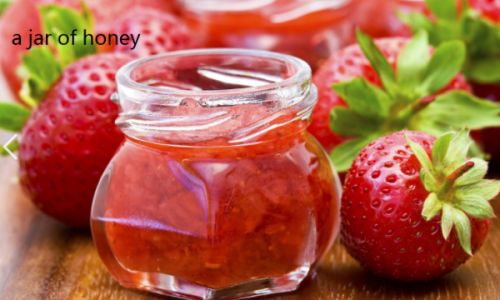
- 4 cups fresh strawberries, hulled and crushed (about 2 pounds)
- 3 cups granulated sugar (adjust to taste for reduced-sugar versions)
- 2 tablespoons lemon juice (freshly squeezed for natural pectin and acidity)
- 1 teaspoon butter (optional, to reduce foaming during cooking)
Tools Required:
- A large, heavy-bottomed pot (to prevent scorching)
- A potato masher or fork (for crushing berries)
- A candy thermometer (for precise gel-stage detection)
- Sterilized glass jars with lids (for preservation)
- A funnel and ladle (for jarring)
Step-by-Step Preparation Guide
Step 1: Preparing the Strawberries
Rinse the strawberries under cool water, gently pat them dry, and remove the green hulls. Crush the berries using a potato masher or your hands, leaving some small chunks for texture. Avoid over-processing, as a chunkier jam offers a more rustic appeal.
Step 2: Combining Ingredients
In the heavy-bottomed pot, combine the crushed strawberries, sugar, and lemon juice. Stir gently to ensure the sugar is evenly distributed. Let the mixture sit for 15–20 minutes to allow the strawberries to release their natural juices.
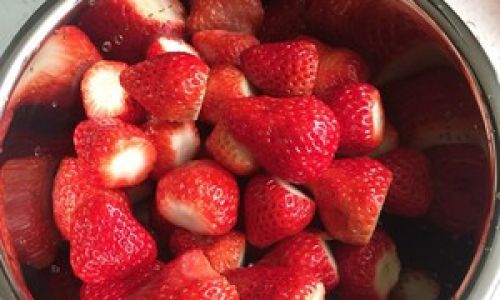
Step 3: Cooking the Jam
Place the pot over medium-high heat and bring the mixture to a rolling boil, stirring frequently to prevent sticking. Add the optional butter to reduce foaming. Once boiling, reduce the heat to medium-low and simmer for 15–25 minutes, skimming off any foam that rises to the surface.
Step 4: Testing for Doneness
There are two primary methods to determine if the jam has reached the gel stage:
- Thermometer Test: The jam is ready when it reaches 220°F (104°C) at sea level. Adjust slightly for higher altitudes.
- Spoon Test: Dip a chilled metal spoon into the jam and hold it sideways. If the jam thickly coats the spoon and drips off in sheets (rather than thin streams), it’s set.
Step 5: Jarring and Preservation
Ladle the hot jam into sterilized jars, leaving ¼-inch headspace. Wipe the rims clean, seal with lids, and process in a boiling-water bath for 10 minutes (adjust for altitude). Alternatively, store unprocessed jars in the refrigerator for up to three weeks.
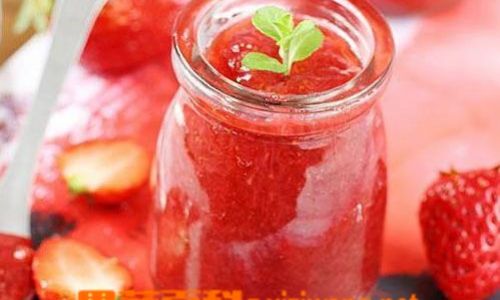
Tips for Success
- Sweetness Adjustments: For a less sugary jam, reduce the sugar by up to 25% and add low-sugar pectin (follow the package instructions).
- Flavor Variations: Experiment with additions like vanilla extract, balsamic vinegar, or fresh herbs (e.g., basil or thyme) during the cooking process.
- Troubleshooting: If the jam is too runny, reboil it with a splash of lemon juice. If it’s too thick, stir in a tablespoon of water and reheat gently.
II. Creative Culinary Uses for Strawberry Jam
Beyond the classic peanut butter and jelly sandwich, strawberry jam offers endless opportunities to enhance both sweet and savory dishes. Here are innovative ways to incorporate it into your meals:
Breakfast and Brunch Delights
- Fluffy Pancakes or Waffles: Drizzle warm jam over stacks and pair with whipped cream or Greek yogurt.
- Stuffed French Toast: Sandwich jam between thick slices of brioche, dip in egg batter, and pan-fry until golden.
- Overnight Oats: Layer jam with oats, chia seeds, and almond milk for a vibrant breakfast parfait.
Decadent Desserts
- Layer Cakes: Fill vanilla or chocolate layers with strawberry jam buttercream for a moist, fruity center.
- Thumbprint Cookies: Indent dough balls, fill with jam, and bake until golden.
- Cheesecake Swirl: Marble jam into cream cheese batter before baking for a stunning marbled effect.
- Ice Cream Topping: Warm the jam slightly and spoon it over vanilla ice cream for a quick sundae.
Beverages and Cocktails
- Sparkling Lemonade: Mix jam with lemon juice, water, and soda water for a refreshing summer drink.
- Cocktail Syrup: Use jam as a sweetener in margaritas, daiquiris, or mimosas.
- Herbal Tea Infusion: Stir a spoonful into black or green tea and garnish with mint.
Savory Pairings
Strawberry jam’s sweet-tart profile complements rich, salty, or spicy flavors:
- Cheese Boards: Pair with brie, goat cheese, or aged cheddar on a charcuterie platter.
- Glazed Meats: Brush jam onto pork chops, chicken thighs, or salmon during the last 5 minutes of grilling.
- Salad Dressings: Whisk jam with olive oil, balsamic vinegar, and Dijon mustard for a fruity vinaigrette.
Unique Non-Culinary Applications
- Homemade Beauty Products: Mix jam with sugar and coconut oil for a lip scrub or body exfoliant.
- Edible Gifts: Decorate jars with fabric and ribbon for holiday or hostess presents.
- Kid-Friendly Crafts: Use jam as a natural paint for edible artwork (though it’s sticky!).
III. Storage and Shelf Life
Properly canned strawberry jam can last up to one year when stored in a cool, dark place. Once opened, refrigerate and consume within three weeks. For smaller batches, skip the canning process and store jam in airtight containers in the fridge.
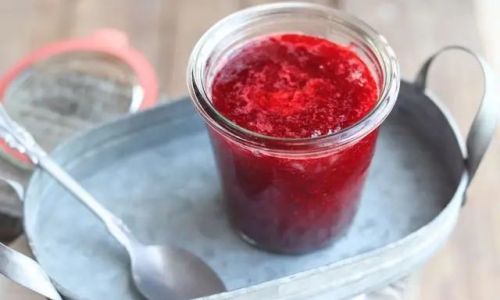
IV. Health Benefits and Nutritional Notes
While strawberry jam is a treat, it offers surprising nutritional perks:
- Vitamin C: Strawberries are rich in antioxidants that boost immunity.
- Fiber: A tablespoon of jam provides a small dose of dietary fiber.
- Low-Calorie Options: Use sugar substitutes like honey or stevia for a healthier twist.
V. Conclusion
Strawberry jam is more than a breakfast condiment—it’s a canvas for culinary creativity. By mastering the art of preservation and exploring unconventional uses, you can transform this humble spread into a star ingredient. Whether you’re canning jars for winter or drizzling jam over a cheese plate, the process and possibilities are endlessly rewarding. So, grab a basket of berries, fire up your stove, and let the sweet magic of strawberry jam unfold in your kitchen.
Final Tip: Experiment fearlessly! Add a pinch of chili flakes for heat, swap sugar with maple syrup, or blend the jam into a marinade. The best recipes are born from imagination and a spoonful of adventure.
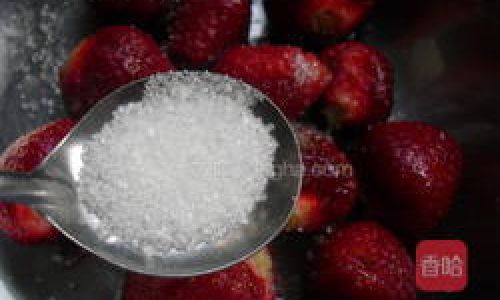


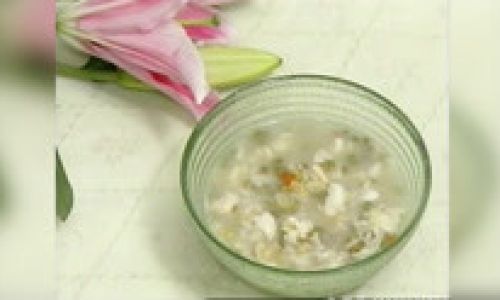



0 comments